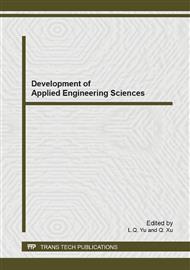p.389
p.393
p.398
p.404
p.411
p.416
p.422
p.428
p.435
A Novel Extracting Algorithm of the Low Gray Fuzzy Edges for Infrared Images
Abstract:
The fuzzy edge detection algorithm proposed by Pal-King has some disadvantages for extracting the low gray level edge information for the infrared images, such as high computation complexity, low threshold segmentation inaccuracy and the leakage edge information. For overcoming the disadvantages, the improved image fuzzy edge detection algorithm is proposed in this paper. First, redefining membership function to simplify computation complexity, the new conversion function enable the function transform interval is [0, 1], thus the value of the low gray level edge is not to be set to 0. Second, Ostu's algorithm is used in the selection of segmentation threshold named as transit point. The traditional threshold value is improved in order to make the segmentation accurate. The experimental results show that the lower gray infrared image edge information is preserved via proposed algorithm in this paper. The detecting results are more accurate. The run time is decreased obviously than the traditional Pal - king algorithm.
Info:
Periodical:
Pages:
411-415
Citation:
Online since:
October 2014
Authors:
Price:
Сopyright:
© 2014 Trans Tech Publications Ltd. All Rights Reserved
Share:
Citation:


